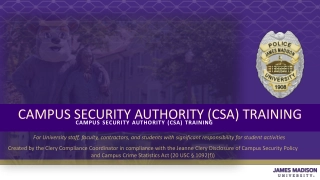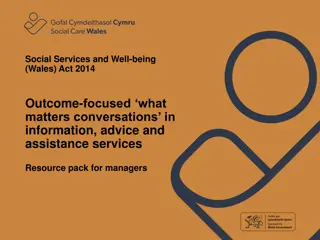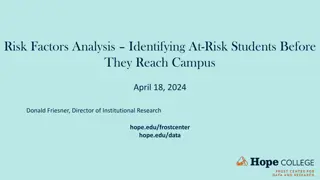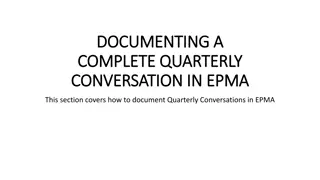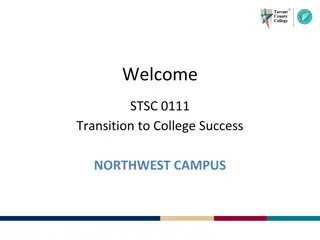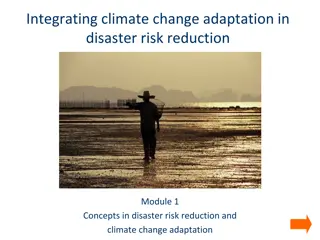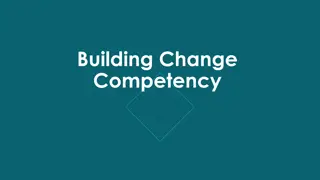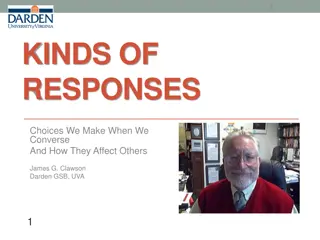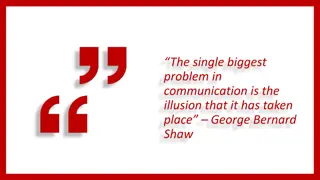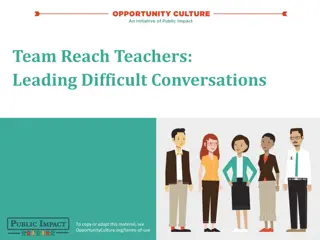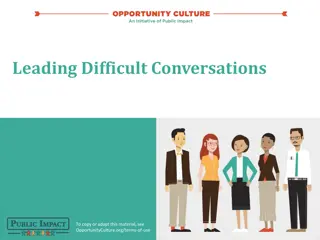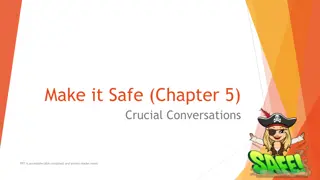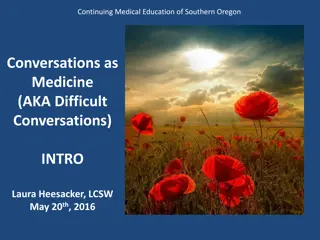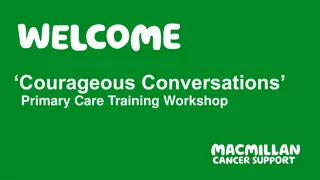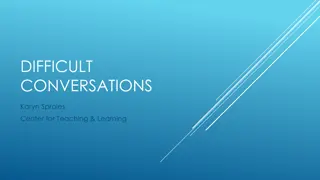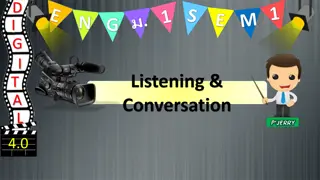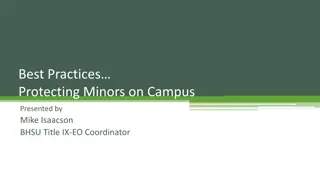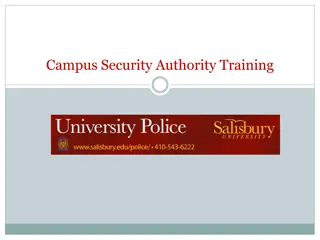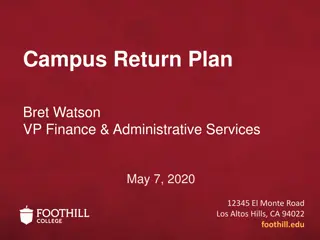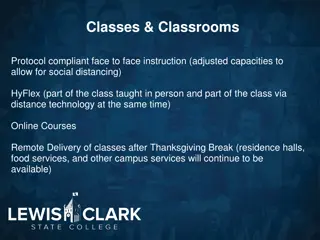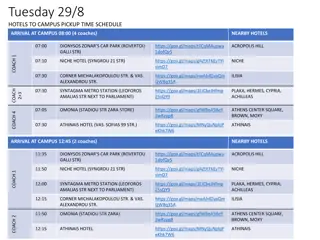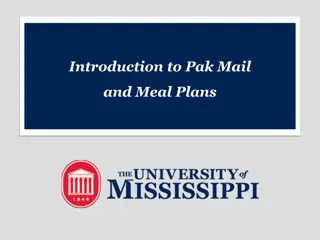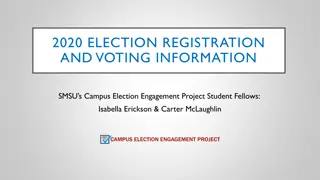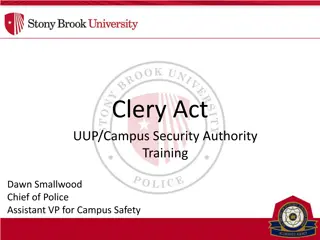Risk Conversations: Best Practices for Change Shepherds on Campus
Explore the essential practices for navigating risks and uncertainties in academic environments, alongside strategies for initiating and sustaining impactful projects. Gain insights into identifying positive and negative risks, understanding project management processes, and integrating human resources effectively.
Download Presentation

Please find below an Image/Link to download the presentation.
The content on the website is provided AS IS for your information and personal use only. It may not be sold, licensed, or shared on other websites without obtaining consent from the author. Download presentation by click this link. If you encounter any issues during the download, it is possible that the publisher has removed the file from their server.
E N D
Presentation Transcript
Risk Conversations: Best Practices for Becoming Change Shepherds on Campus Thomas J. Tobin Northeastern Illinois University
T hought E xercise: P haraohs B ling ? T hought E xercise: P haraoh s B ling P haraoh build a fitting monument to his eternal glory. P haraoh has chosen you you to W hat risks with starting, and then keeping the project going? risks are associated Y O U Y O U P H A R A O H P H A R A O H P .S .: D on t make Y ul B rynner mad!
Whos here today? Let s customize our session based on our roles and industries. Who Are We?
Risk refers to any uncertain event. Issues are factors that are well known in advance (e.g., funds need to be approved), while risks are the uncertainties in the project. What s a Risk?
Risk can be positive or negative. We all know what negative risks are: the risk is that something will go wrong. Positive risk is taking a chance in order to achieve a benefit or savings. Positive and Negative Risk
Human Resources Integration Scope Time Cost Quality Communications Risk Procurement Develop Project Charter Identify Stakeholders Initiating Develop Project Management Plan Collect Requirements Define Activities Estimate Costs Plan Quality Develop Human Resource Plan Plan Communications Plan Risk Management Plan Procurements Sequence Activities Determine Budget Define Scope Identify Risks Create WBS Estimate Activity Resources Perform Qual/Quant Risk Analysis Planning Estimate Activity Durations Plan Risk Responses Develop Schedule Direct and Manage Project Execution Perform Quality Assurance Acquire Project Team Distribute Information Conduct Procurements Manage Stakeholder Expectations Develop Project Team Executing Manage Project Team Monitor & Control Project Work Verify Scope Control Schedule Control Costs Perform Quality Control Report Performance Monitor & Control Risks Administer Procurements Control Scope Monitoring & Controlling Perform Integrated Change Control Close Project or Phase Close Procurements Closing Project Management Processes
F raming the T ask: P haraohs B ling F raming the T ask: P haraoh s B ling Okay, people. Break s over! W hat would happen if things went other than as expected other than as expected? H ow many elements could you remove project before the objective is endangered? remove from the
Imagine that the project is completed, and that it has failed. What could have caused the failure? Think about: Integration Scope Time Cost Quality Resources Communication Procurement The Pre-Mortem
Once you have all of the major tasks defined for the project, do a back of the envelope risk assessment. Find out which tasks are critical and which are not by removing individual tasks from the project, and assessing the impact. Remove One Element
P reparing for R isks: P haraohs B ling P reparing for R isks: P haraoh s B ling Um, is that blood? Yup. We re hosed. W hat s likely to happen? likely (and not likely) W hat are (and aren t) risks risks? H ow will you respond risks arise? respond when
Categorize risks by event, probability, and impact to create a P&I value. Also: Document Review Brainstorming Anonymous Expertise (Delphi) Interviews SWOT Analysis Assumption Analysis Flow-Chart/Ishikawa Diagrams Prioritization: Important & Urgent Risk Assessment
Once you have a P&I value for the known risks, prioritize them: Deal only with important & urgent. Plan for what s likely. Communicate with stakeholders about possible risk responses. Evaluate both negative and positive risks with stakeholders. Risk Prediction
Strategies for negative risks: Avoid Transfer Mitigate Accept Strategies for positive risks: Exploit Share Enhance Accept Risk Management
Implementing a P lan: P haraohs B ling Implementing a P lan: P haraoh s B ling I hope they like the sun porch I added. W hat good outcomes you want to achieve? outcomes do W ho in your institution can help you to communicate about risks? communicate
Here we go again In order to monitor and control risks, plan to communicate: So let it be written! Hold status meetings. Report on trend analysis results. Create a chain of communication. Share a risk register. Customize data for stakeholders. Create feedback loops. Communicating Risk
Strategies for risk conversations: Set expectations. Bring the data. Let the stakeholders lead. Behaviors for change shepherds: Ask first (with suggestions). Determine group risk acceptance. Freedom to Risk
T ake T ake- -A ways A ways: P haraoh s B ling : P haraoh s B ling Why does traffic always slow down in the Fort Pitt Tunnel? W hat did you learn from P haraoh in your own institution? P haraoh that you can use S hare your own risk stories, and say how you ll become a change shepherd and hold risk conversations at your institution. change shepherd risk conversations
T hank Y ou! t-tobin@neiu.edu


